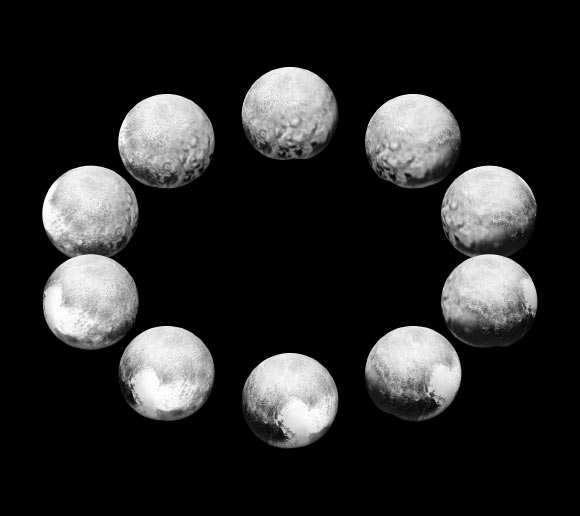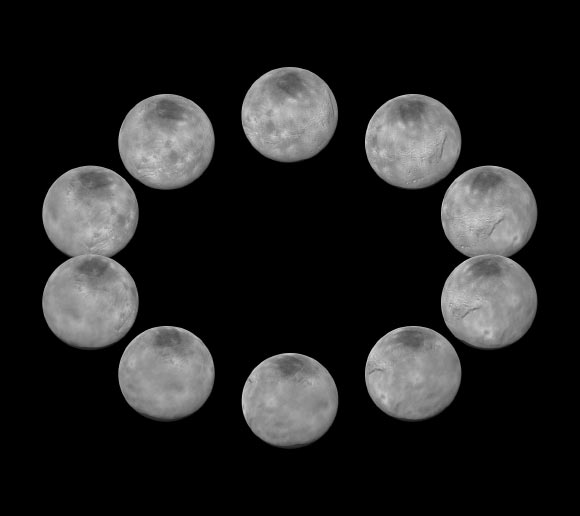On approach to the Pluto system in July 2015, NASA’s New Horizons spacecraft captured images of the dwarf planet and its biggest moon, Charon, rotating over the course of a full day.

A day on the dwarf planet Pluto. Image credit: NASA / Johns Hopkins University Applied Physics Laboratory / Southwest Research Institute.
Pluto and the largest of its five known moons, Charon, orbit each other every 6.4 days.
These objects are gravitationally locked to one another, so each keeps the same face towards the other.
The images of Pluto were taken by New Horizons’ Long Range Reconnaissance Imager and the Ralph/Multispectral Visible Imaging Camera from July 7 to July 13, 2015.
The more distant images contribute to the view at the 3 o’clock position, with the top of the heart-shaped Tombaugh Regio slipping out of view, giving way to the side of the dwarf planet that was facing away from the robotic spacecraft during closest approach on July 14, 2015. The side the spacecraft saw in most detail is at the 6 o’clock position.
When these images were taken, New Horizons was at a distance between 5 million miles (8 million km) and about 400,000 miles (about 645,000 km) from Pluto.

A day on Pluto’s largest moon Charon. Image credit: NASA / Johns Hopkins University Applied Physics Laboratory / Southwest Research Institute.
The images of Charon were taken by New Horizons’ Long Range Reconnaissance Imager and the Ralph/Multispectral Visible Imaging Camera from July 7-13, 2015, as New Horizons closed in over a range of 6.4 million miles (10.2 million km).
The more distant images contribute to the view at the 9 o’clock position, with few of the signature surface features visible, such as the cratered uplands, canyons, or rolling plains of Vulcan Planum.
The side the robotic spacecraft saw in most detail, during closest approach on July 14, 2015, is at the 12 o’clock position.
New Horizons is currently 3.23 billion miles (5.2 billion km) from Earth and 97.6 million miles (157.1 million km) beyond Pluto. It is healthy and all systems are operating normally.







